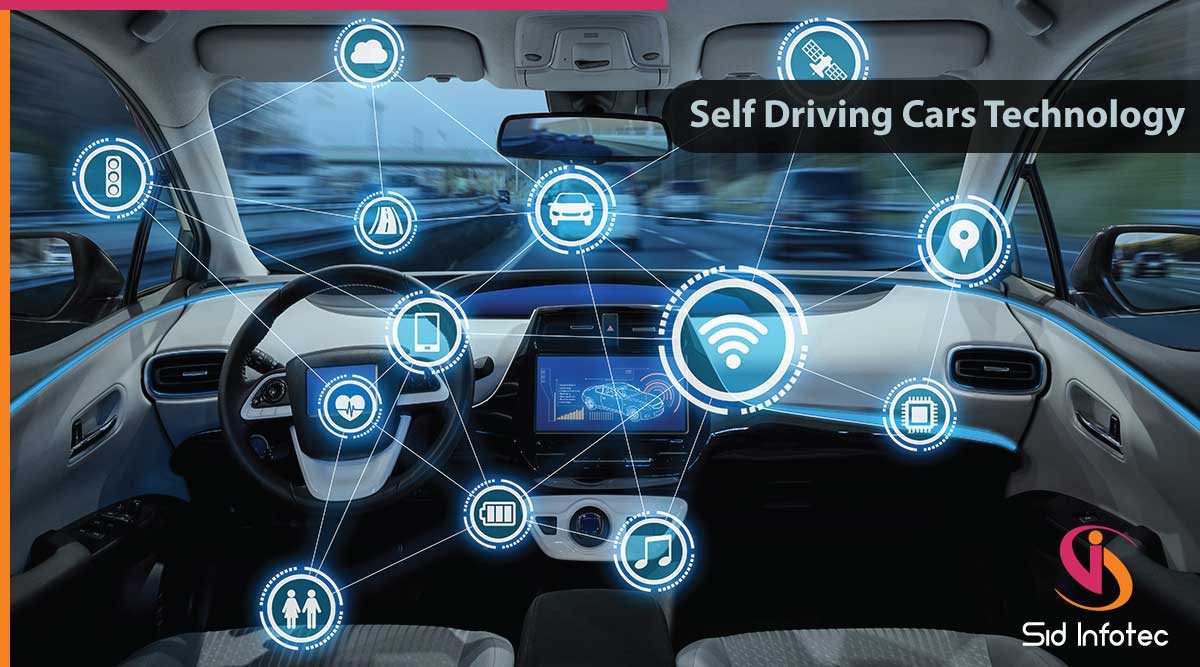
Self-driving cars, vehicles are those in which human drivers are never needed to take control to safely operate the vehicle. Also known as autonomous, independent or “driverless” cars, they use combination of sensors and software to navigate, control, and drive the vehicle. Presently, there are no lawfully operating, fully-autonomous vehicles in the United States or anywhere in the world. There are, however, partially-autonomous vehicles—cars and trucks with fluctuating amounts of self-automation, from traditional cars with brake and lane assistance to highly-independent, self-driving prototypes. Different cars are capable of different levels of self-driving, and are often described by researchers on a scale of 0-5.
Layers of autonomy
Level 0: All major systems are controlled by humans
Level 1: Certain systems, such as cruise control or automatic braking, may be controlled by the car, one at a time
Level 2: The car offers at least two simultaneous automated functions, like acceleration and steering, but requires humans for safe operation
Level 3: The car can manage all safety-critical functions under certain conditions, but the driver is expected to take over when alerted
Level 4: The car is fully-autonomous in some driving scenarios, though not all
Level 5: The car is completely capable of self-driving in every situation
How they work
Sensors generate a 3-dimensional map to aid navigation.
Various self-driving technologies have been established by Google, Uber, Tesla, Nissan, and other major automakers, researchers, and technology companies. While design details differ, most self-driving structures generate and preserve an internal map of their environments, based on a wide array of sensors, like radar. Uber’s self-driving prototypes use sixty-four laser beams, along with other sensors, to construct their internal map; Google’s prototypes have, at various stages, used lasers, radar, high-powered cameras, and sonar.
Software then put under developments those inputs, plots a path, and sends instructions to the vehicle’s “actuators,” which control acceleration, braking, and steering. Hard-coded rules, obstacle avoidance algorithms, predictive modelling, and “smart” object discrimination (i.e., knowing the difference between a bicycle and a motorcycle) help the software follow traffic rules and navigate obstacles. Partially-autonomous vehicles may require a human driver to intervene if the system encounters uncertainty; fully-autonomous vehicles may not even offer a steering wheel.
Self-driving cars can be further distinguished as being “connected” or not, indicating whether they can communicate with other vehicles and/or infrastructure, such as next generation traffic lights. Most prototypes do not currently have this capability.
Impacts
The costs and benefits of self-driving cars are still largely hypothetical. More information is needed to fully assess how they’ll impact drivers, the economy, equity, and environmental and public health.
Safety is an overarching concern. Many thousands of people die in motor vehicle crashes every year in the United States (more than 30,000 in 2015); self-driving vehicles could, hypothetically, reduce that number—software could prove to be less error-prone than humans—but cybersecurity is still a chief concern.
Equity is another major consideration. Self-driving technology could help mobilize individuals who are unable to drive themselves, such as the elderly or disabled. But the widespread adoption of autonomous vehicles could also displace millions of Americans employed as drivers, negatively impact public transportation funding, and perpetuate the current transportation system’s injustices.
Environmental impacts are a serious concern, and a major uncertainty. Accessible, affordable, and convenient self-driving cars could increase the total number of miles driven each year. If those vehicles are powered by gasoline, then transportation-related climate emissions could skyrocket. If, however, the vehicles are electrified—and paired with a clean electricity grid—then transportation emissions could drop, perhaps significantly.
Companies that are investing in Self-driving car:-
Tesla
Uber
Nissan
General Motors
And many more coming…
Apple’s Self-driving Car Project
Apple’s autonomous driving program, Project Titan, might have been Silicon Valley’s worst-kept secret. After kicking off the program in 2014, Apple hired over 1,000 engineers in an attempt to compete with the likes of Tesla and Google. By 2016, most of them had been let go.
Rising costs and technical challenges arising from being late to the party led Apple to shift its focus to building the autonomous systems Cook spoke on today. Now, Apple is partnering with automakers like Lexus to integrate its ecosystem into the next generation of smart cars.
Cook didn’t reveal what that might look like, but it’s easy to imagine a Lexus with a tablet control station (like Tesla’s), Siri integration, and perhaps some of the AR features Apple is reportedly working on.
All these companies are trying to get breakthrough in self-driving cars. Many has already launched the training phase and started experimenting. But it is still uncertain when this self-driving car comes for public se. It will face many legal challenges, technical problems, and face challenges to gain human trust. But all these things can be removed by using proper technology. So now it’s interesting to see how early this technology comes and gets adopted. That’s all for now keep visiting our site to get latest updates on technology.